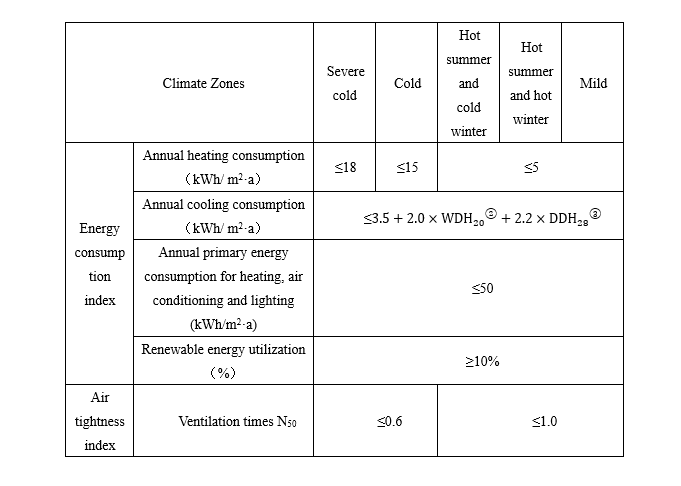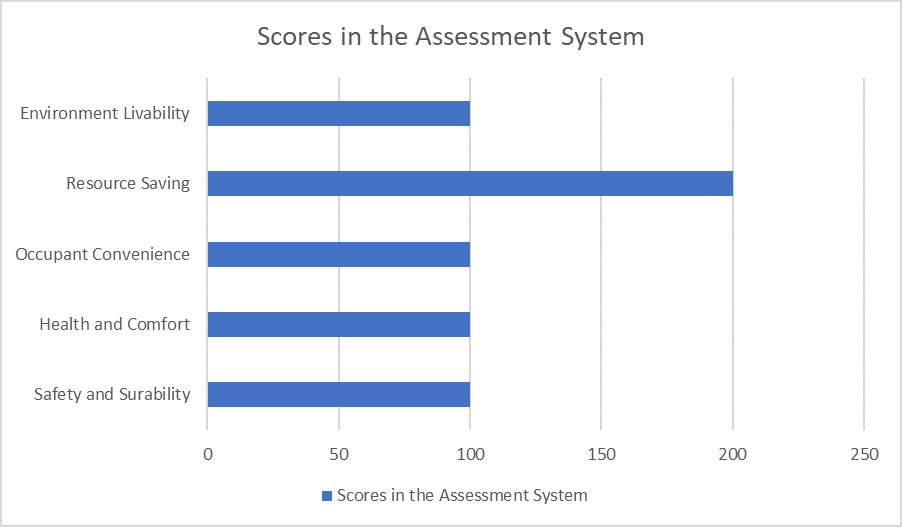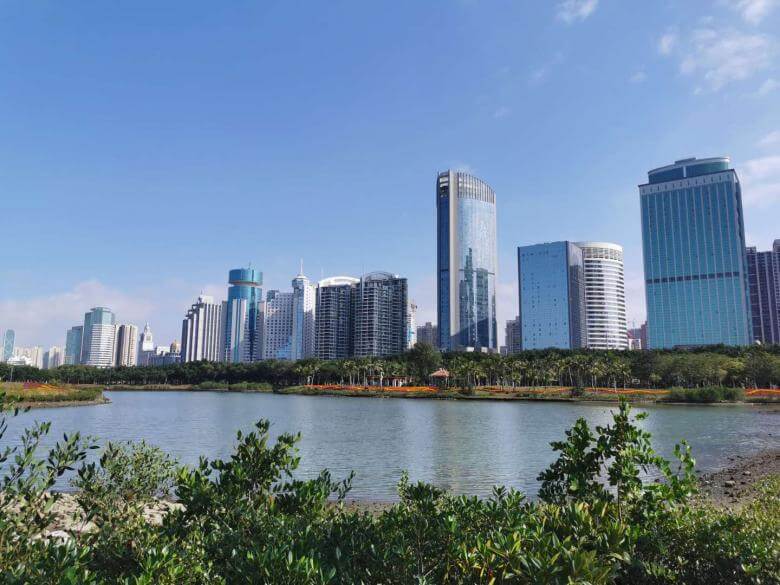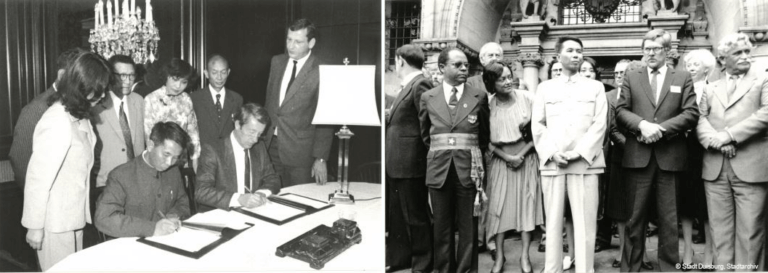Regulatory policy
From the first Chinese Design Standards for Civil Buildings in 1986 to the recent released National Standard of Green Buildings Assessment, policy on energy efficiency and carbon emissions of buildings, including retrofitting old ones and constructing new ones, has undergone significant changes in the past decades in China.
In 2015, the Chinese government proposed at the COP 21 in Paris that “China will peak its carbon dioxide emissions around 2030 and strive for its early realization”, while the building sector provides huge potentials. China’s total energy consumption in building sector is 899 million tons of standard coal equivalent, accounting for 20.6% of the country’s total energy consumption; total carbon emissions are 1.96 billion tons of CO2, accounting for approximately 19.0% of the country’s carbon emissions, according to China Building Energy Consumption Research Report 2018. The carbon emissions per unit area of urban residential buildings and public buildings reached their peaks in 2012, which was 35 kg CO2 / m2 and 74 kg CO2 / m2 respectively. Since then, they have decreased to 29 kg CO2 / m2 and 64 kg CO2 / m2 in 2016. The carbon emission of energy consumption per unit building also decreased from 2.41 kg CO2 / kgce in 2012 to 2.18kg CO2 / kgce in 2016.
Since 2015 the Ministry of Housing and Urban Rural Development (MoHURD) has been taking actions to accelerate the transition to low-carbon buildings. The new Technical Standards for Nearly Zero Energy Building, published by MoHURD and came into force on September 1st 2019, includes different sub-national standards for different climate zones in China. Compared to the previous ones which usually only had one or two indicators for certain zones, in this new version, different energy consumption control indicators are proposed for near zero energy buildings being the world’s most comprehensive one. In cold and severe cold zones, energy consumption aims at a reduction of 70%, while in zones where summer is hot and winter is hot as well as summer is hot and winter is cold, energy consumption aims at reducing 60%.

Note: ① In the table, m2 is the area used in the suite. The area used in the suite should include the total area of the bedroom, living room, dining room, kitchen, bathroom, hall, hallway, storage room, wall cabinet, etc.② WDH_20 (Wet-bulb degree hours 20) is the cumulative value of the difference between the wet bulb temperature and 20 ° C (unit: kKh) when the outdoor wet bulb temperature is higher than 20 ° C in a year;③ DDH_28 (Dry-bulb degree hours 28) is the cumulative value of the difference between the dry-bulb temperature and 28 ° C when the outdoor dry-bulb temperature is higher than 28 ° C in a year (unit: kKh)
Along with this new standard, the national government aims for 50% of new buildings to be certified green by 2020, getting at least one star in the evaluation system, says the 13th Five-Year Plan on Green Buildings. Green building certification is divided into a three-star grades system according to the degree of meeting the control items and scoring items. If the total score of green buildings reaches 50 points, 60 points or 80 points, the grade of green buildings will respectively be 1 star, 2 stars or 3 stars. The old evaluation star system is composed of six indexes: land saving and outdoor environment, energy saving and utilization, water conserving and water resource utilization, material saving and material resource utilization, indoor environmental quality and operation management (residential buildings) or comprehensive performance of the whole life cycle (public buildings). In the new National Standard of Green Buildings Assessment 2019, convenience for habitants and innovation are added as new indicators (see chart below). Additionally, the Plan aims that by 2020 over 500 million square meters of existing residential buildings and 100 million square meters of public buildings will have been renovated for energy saving, with energy saving buildings accounting for more than 60 percent of existing residential buildings nationwide. The proportion of renewable energy replacing conventional energy of civilian buildings will account for more than 6% of energy consumption in urban areas.

This year MoHURD also published the National Calculation Standard for Building’s Carbon Emission (the Standard), which came into force on December 1st, 2019. The standard applies to newly constructed, expanded and renovated civil construction and targets single buildings or groups of buildings. It can be applied during the designing phase or after the construction phase. The calculation process can be divided into three phases, namely (i) the construction and demolition phase, (ii) the production of the building materials and transportation phase, and (iii) the operation phase. The segmentation calculation results can be accumulated as the carbon offset amount of the building’s full life circle. Carbon emissions calculations should include the various types of greenhouse gas listed in the IPCC Guidelines for National Greenhouse Gas Inventories. The corresponding software has been developed based on the standard. MoHURD claims that by applying this, more attention to energy-saving and carbon reduction during the building’s full life cycle in the design stage will be paid.
Besides these standards, the government also introduced voluntary labels or certificates, some of which are mandatory for public buildings. In 2007 MOHURD introduced China’s first national Green Building Evaluation Label to make the market for low-carbon buildings in China more transparent. In 2008 MoHURD released the Building Energy Efficiency Label which is mandatory for government buildings and applicants for national or provincial demonstration projects or green building labeling. In 2019, the voluntary trading platform Green Electricity Certificates (GEC) was initiated, allowing companies to claim the environmental benefits associated with renewable energy generation being indirect consumers.
Subsidy programs and funding mechanism
Main existing financing models include
• Government financing model
The government financing mode refers to the fiscal subsidies provided by the central government and the subsidies provided by the local government. The fiscal support promotes the energy-saving transformation of buildings, which is conducive to bringing into the leverage effect of fiscal policies and guiding more social capital investment. But the problem is that once the fiscal subsidy fund shrinks, it will be difficult to promote the energy-saving transformation to continue to carry out. The already formed market will fall back quickly, and it will be difficult to form a long-term development mechanism. Key cities in the energy-saving transformation of public buildings are supported by the national finance, with the central government subsidizing 20 yuan per square meter, and local governments also put forward corresponding fiscal supporting measures to jointly promote the progress of energy-saving transformation. Several provinces published their subsidy program on green buildings, including Beijing, Hebei, Shandong, Jiangsu etc. For example in Beijing in 2018, a 600 Yuan per m2 subsidy can be gained for enterprises making green buildings.
• Energy Performance Contract (EPC)
The central government set up an incentive fund in 2010 to promote EPC and the development of the energy service industry. For retrofit projects that employ EPC, the fund award RMB 240 per tonne of coal equivalent saved, while matching incentive programs run by provincial governments add another RMB 60 or more per tonne of coal equivalent saved. The effectiveness of these incentive policies, however, was diminished by the rigorous qualification reviews for ESCOs, strict filing and review standards, and time-consuming application processes. As a result, less than 10% of the projects that received the funding were building retrofit projects. In May 2015, the State Council canceled the EPC fund, marking the end of these incentive policies.
• Self-financing model
Developers or building owners of the energy-saving transformation project act as the main actors of the transformation, raise the incremental investment of the energy-saving projects and recoup the investment through the incremental income of the energy-saving projects.
• Bank loan model
In China’s current financial system, bank loans are the most important way to provide funds to the market. No exception in the energy-saving service industry, Bank loans are the most widely used financing channel for ESCO, including mortgage loan and secured loan. At present, Bank of Beijing, Pudong Development Bank, Industrial Bank, China Merchants Bank and other commercial banks in China have actively provided credit support for ESCO. Based on traditional business, many banks have launched a variety of new financial products and updated their credit evaluation system according to the characteristics of EMC and ESCO. Shanghai Pudong Development Bank, China Merchants Bank, Bank of Beijing, Industrial bank and other institutions have formulated “green financial service program” to promote green financial services. Some Banks have set up specialized teams to manage green credit, and even opened special approval channels for financing of green credit projects to improve the approval efficiency. Therefore, Banks are paying more and more attention to the financing of energy-saving projects. As an example, future profit pledge loan of Shanghai Pudong Development Bank EMC mainly aimed at the EMC projects which are declared and approved by the office of Shanghai EMC committee and have obtained the relevant fiscal subsidy. Shanghai Pudong Development Bank provide special loan with pledge in the form of “earnings implemented in the future” to ESCO, distributing the future profit as loans in advance in a lump sum or by several times, according to a certain proportion of projects’ future profit. The term of payment shall be determined by the term of collection of the project, and the future profit rights of the project shall be used as the repayment source of the loan. ESCOs that adopt EMC can obtain loans with project income in the next few years from SPD Bank and put them into EMC projects undertaken by the companies, which solves the problem of capital turnover in the development of the company and speeds up the pace of development.





